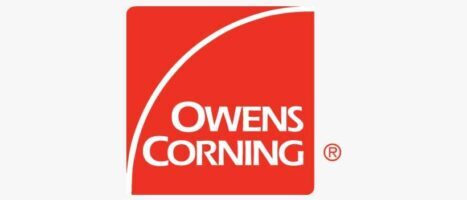When two major glassworks corporations — Corning Glass and Owens-Illinois — merged in 1935, Owens Corning Fiberglass Corporation became the world’s largest fiberglass manufacturer. The company was the first to manufacture fiberglass insulation, which became the insulation of choice in homes and businesses nationwide. Fiberglass insulation, which is made from fine glass fibers, was popular during the post-World War II housing expansion. Owens Corning was tremendously successful with it first year sales topping $2.5 million. The insulation quickly became known for its pink color and Pink Panther spokestoon. The company was also known for its fiberglass-reinforced plastics that were used in roofs, boats and car bodies, among other places.
When fiberglass insulation became such a hit, Owens Corning incorporated asbestos into the materials because of its fire and heat resistance and insulating properties. Asbestos was cheap and easy to get, making it the perfect material for the burgeoning company. In 1997, the company acquired Fibreboard Corp, which made asbestos-containing flooring and industrial insulation. Owens Corning’s website said although the company sold fewer than one percent of all asbestos-containing products, it sold 30 percent of certain widely used products with strong brand recognition.
Owens Corning Asbestos Lawsuit
While Owens-Corning claims they removed asbestos from their Kaylo products early on, their products were found to have caused the death of thousands of people. Early lawsuits against the brand came in 1978 when a class action lawsuit was filed by two shipyard workers who contracted asbestosis when exposed to Owens-Corning products. The lawsuit was filed on behalf of 5,000 other workers who were exposed to the same asbestos-containing products.
Many other cases throughout the years have been filed against Owens-Corning for their use of asbestos. In one case, a Florida jury awarded a man a staggering $31 million in punitive damages and $1.8 in compensatory damages. In another case, three victims in New York were awarded with $18 million in damages. While Owens-Corning contested many asbestos lawsuits, they ended up filing bankruptcy in 2000 after being named in approximately 243,000 Owens Corning products containing asbestos.
Owens Corning and Asbestos
Homeowners who used the company’s insulation products and people who worked in buildings where the insulation was used may have been exposed to asbestos. The company’s insulation was also widely used on U.S. Navy ships and other cargo ships. As a result, shipyard workers, military veterans and their family members were often exposed to asbestos. Because of the wide reach of the company, there were many occupations that were put at risk for asbestos exposure. The following occupations are considered high risk:
- Construction Workers
- Custodians
- Architects
- Demolition Workers
How Was the OCF Trust Formed?
By the mid 1980s, the onslaught of took its toll on Owens Corning. Nearly 85,000 injured workers, family members and consumers filed lawsuits. The acquisition of Fibreboard Corp. only added to the number of asbestos lawsuits. During the 1999 court case, evidence showed that Owens Corning had concealed information about the dangers of asbestos from its employees and consumers. That includes advertising its popular Kaylo insulation product as non-toxic when the company knew asbestos was a carcinogen.
Currently,The Owens Corning trust payments are paid at 7.8 percent. The Owens Corning Fibreboard trust payments are paid at 6.7 percent. This is among the lowest percent payments within the larger trusts.
Looking to see if you qualify for compensation?
Find Out NowOwens Corning Asbestos Products
Owens Corning was well known for its groundbreaking insulation products. Most of its products contained asbestos until the early to mid 1970s. The following are some of the more popular asbestos-containing products:
Kaylo
This popular brand of insulation was made from 1953 to 1972. Several types of Kaylo were made, including thick sheets called the Kaylo Block and wrap-around insulation called Kaylo pipe insulation. The Kaylo products, including insulation sheets, were also widely used on military vessels. The Kaylo brand was discontinued in 1972. The most common Kaylo products included:
- Kaylo Heat Insulating Block
- Kaylo Pipe Insulation
- Kaylo Duct Insulation
- Kaylo Equipment Insulation
- Kaylo Cold Storage Systems
- Kaylo Insulating Roof Tile
One Cote Insulating Cement
This asbestos-containing cement powder was sold in large bags to be reconstituted with water. Workers breathed in asbestos fibers when the powder was released from the bag.
OCF Mastic
Mastic adhesives, thick cement-type products, are widely used in industrial settings to repair or secure flooring and tiles. Asbestos is added to mastic adhesives to increase the tensile strength and make it chemical and heat resistant.
If you or a loved one worked for Owens-Corning Fibreboard, learn more about construction products that contain asbestos.
Owens Corning Asbestos Settlement
When filing for individual review compensation against this corporation it is important to know what products you came in contact with and which disease level you have. If an individual review is approved, the claim pays an average value, as follows:
Owens-Corning Compensation Amounts
| Disease | Compensation |
|---|---|
| Mesothelioma | $270,000 |
| Lung Cancer | $50,000 |
| Other Cancer | $25,000 |
| Severe Asbestosis | $50,000 |
How to Receive Compensation
Before applying for an asbestos trust, you must prove that you meet the exposure requirements for a claim. There are several criteria you must meet:
- Diagnosis and evidence of a qualifying asbestos-related condition including Asbestosis, Lung or other type of Cancer, or Mesothelioma.
- Proof of occupational or environmental exposure occurring during qualifying time periods with relevant latency periods.
- Claim within the statute of limitations.
Find Out if you Qualify
Fill out our quick form and see if you qualify for trust fund compensation
Check NowSources
- Owens Corning Financial Reorganization. Asbestos Chronology. Retrieved from http://www2.owenscorning.com/finre/asbestos.html
- Florida Supreme Court. Owens Corning v. Deward Ballard. http://www.floridasupremecourt.org/pub_info/summaries/briefs/out/92963a.pdf
- Update Regarding Authentication of Exposure Evidence and Releases 2021. Retrieved from http://www.ocfbasbestostrust.com/wp-content/uploads/2021/09/Notice-Re-Exposure-Evidence-and-Releases-FINAL.pdf


